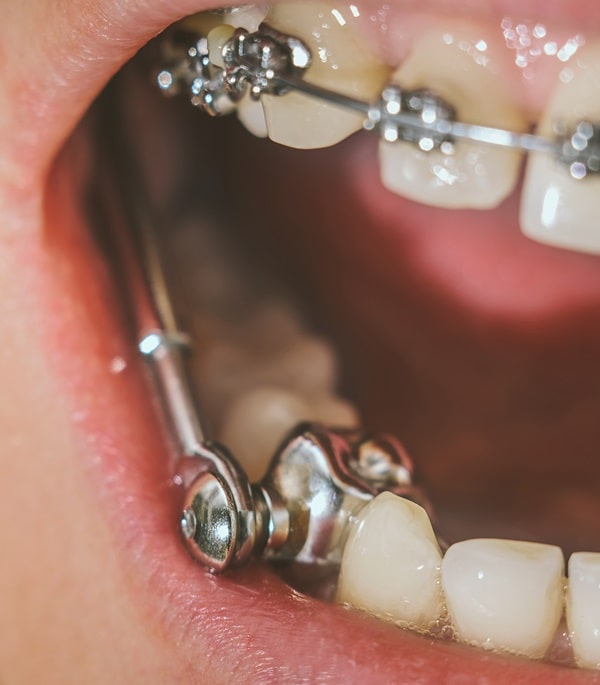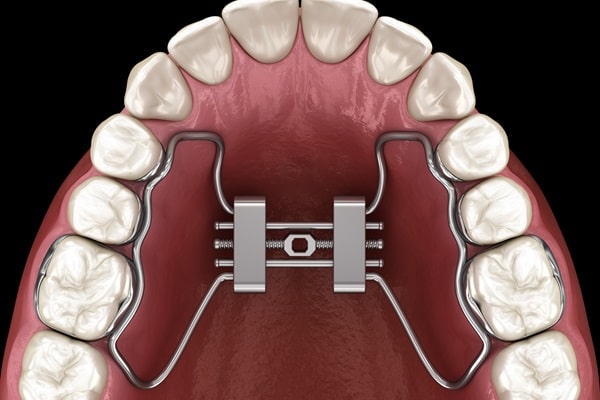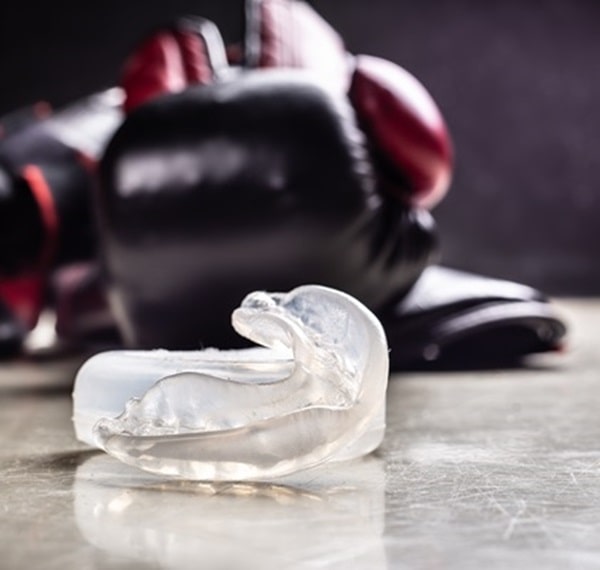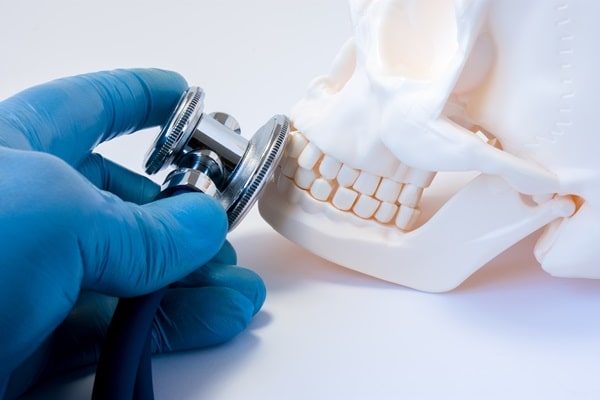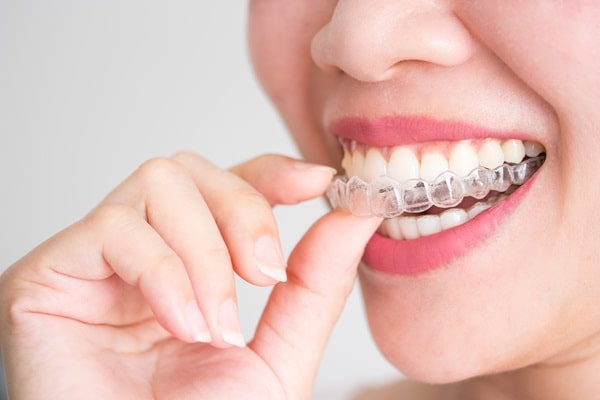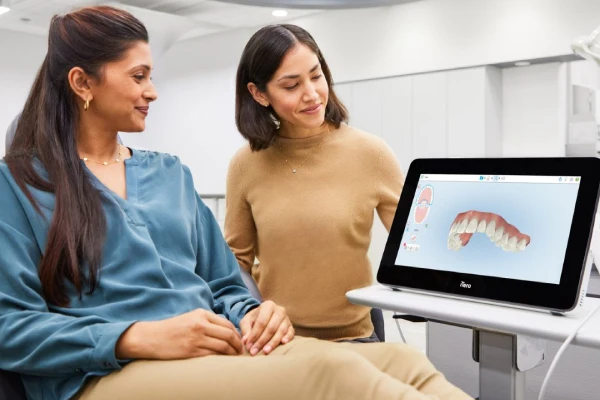Hamilton Orthodontics
Treatments
How Orthodontic Treatment Works
Orthodontic appliances can be made of metal, ceramic, or plastic. They may be removable or they may be brackets bonded to the teeth. By placing a constant, gentle force in a carefully controlled direction, braces slowly move teeth to a corrected position.
This is a great time to wear braces! Gone are the days when a metal band with a bracket was placed around each tooth. You can often choose brackets that are clear or metallic, and sometimes you can choose the color of the ties that hold the wire in brackets. Wires are also less noticeable than they used to be, and the latest materials move teeth faster with less discomfort to patients.
Duration of Treatment
Treatment time typically ranges from one to three years, depending on the growth of the patient’s mouth and face, and the severity of the problem. Patients grow at different rates and will respond variously to orthodontic treatment, so the time until case completion may differ from the original estimate. The patient’s diligent use of any prescribed rubber bands or headgear is an important factor in achieving the most efficient treatment. Interceptive or early treatment procedures may take as few as six months.
Herbst® Appliance
HERBST APPLIANCE will improve jaw function. This eventually leads to an ideal bite.
One of the most common problems presented to an orthodontist is the upper teeth being further forward relative to the lower teeth. In most cases, this is the result of the lower jaw being set back relative to the upper jaw, as opposed to the upper jaw being too far out. The Herbst is a fixed appliance that is used, usually in conjunction with braces, to correct this type of bite or overbite.
In the past, orthodontists used head gear to correct overbites; however, head gear was difficult to wear and depended on patient compliance. The Herbst appliance accomplishes the same thing as the traditional head gear and is actually more effective. While it has the same “headgear effect” of holding the top jaw from continuing to outgrow the bottom jaw, it also pushes the bottom jaw forward, helping it “catch up”.
The growth center of the bottom jaw is near the lower jaw joint and the Herbst appliance works to “remodel” this area. Most patients find the Herbst appliance surprisingly easy to wear.
Rapid Palatal Expander
The Rapid Palatal Expander (RPE) orthodontic appliance is one of the best orthopedic appliances available in orthodontics. It is easy to use and provides large benefits in creating a proper occlusion or bite. The Rapid Palatal Expander appliance is an appliance that is placed on the upper teeth. It “expands” (or widens) the bones in the upper jaw by putting gentle pressure on the upper molars each time an activation is made. Appling this gentle pressure at an early age can separate the mid palatal suture of the bones of the upper jaw, making it wider, and thus, creating more room for the adult teeth to erupt and the smile to better fit with the lower teeth.
Mouthguards
Mouthguards help protect your teeth and gums from injury, as well as protecting you from concussions. If you participate in basketball, boxing, hockey, football, gymnastics, lacrosse, martial arts, racquetball, rugby, track and field, skateboarding, skiing and snowboarding, skydiving, soccer, surfing, volleyball, water polo, weightlifting, wrestling, it is recommended by the Canadian Association of Orthodontists that you wear a mouthguard. Protecting your smile while playing sports is essential during orthodontic treatment.
Choosing the right mouthguard is essential. You will require an Orthodontic Mouthguard; do not choose a boilable or fitted mouthguard even if it states its for orthodontics. Orthodontic mouthguards can be purchased at most sporting goods stores. Your orthodontic team can show you how to wear a mouthguard properly and how to choose the right mouthguard to protect your smile.
Oral and Maxillofacial Surgery
Surgical orthodontics, also known as orthognathic surgery, is a type of orthodontic treatment used to correct severe cases that include bad bites, jaw bone abnormalities, and malocclusion. Oral and maxillofacial surgery is one of the nine recognized dental specialties, and it focuses on treating complex craniofacial cases that involve the mouth, jaw, face, and skull. If you need surgical orthodontics, your orthodontist will work with an oral and maxillofacial surgeon to ensure that you receive the best care possible.
Carriere® Distalizer™ Appliance
The Carriere Distalizer is an orthodontic device developed to correct a bite without removing permanent teeth when teeth have erupted incorrectly. With an effect similar to headgear, but without the use of a bulky appliance, the Carriere Distalizer pushes upper teeth back to create a corrected bite prior to the addition of braces.
Invisalign® Treatment
Consider Invisalign treatment to straighten your teeth without braces.
A complimentary consultation with our doctor can determine if Invisalign clear aligners are right for you.
iTero® Digital Impression System
No more goop, gagging, or discomfort. Using an iTero scanner, your orthodontist can take a highly accurate digital impression of your teeth and jaw. The new technology completely eliminates the tray and putty impressions, where the experience is comparable to stuffing a big wad of gum in your mouth.
Empower®
Empower braces feature self-ligating technology, which uses a clip to hold your arch wire in place instead of traditional elastic ties. Elastic ties can stain and need to be replaced during adjustment appointments. Empower self-ligating clips are designed for quick, easy wire adjustments, meaning less time spent in our office and more time for you to enjoy the things you love!
LightForce™
LightForce™ Braces are the world’s first 3D printed braces. After your teeth are initially captured and evaluated at your consultation appointment, the dentist positions them on a computer for optimal function and esthetics.
Our Location


